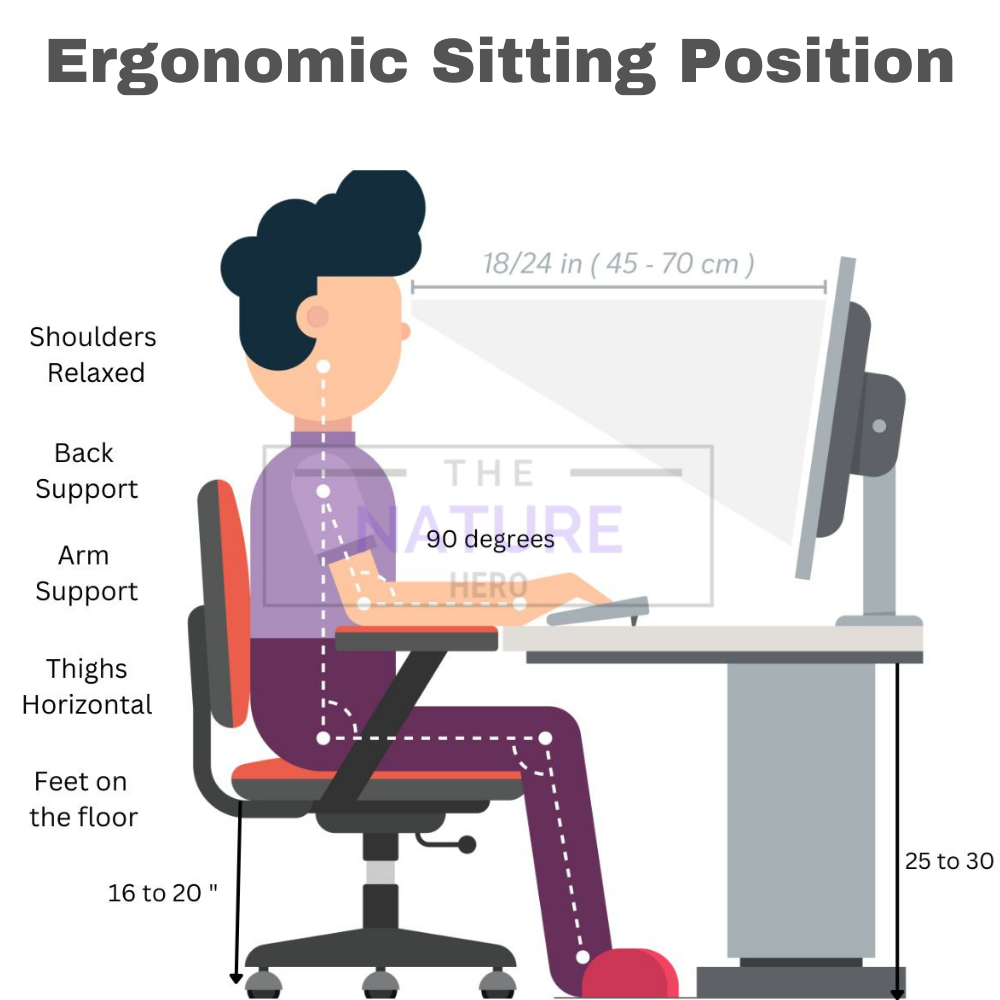Working in front of the computer screen for long hours in an upright position usually tires me.
Sitting in an upright posture without getting hurt in the back is tough.
However, our work requires us to sit in the same position for a long time.
This article will provide some critical information about the upright sitting position.
Continue reading to find out why sitting up straight is uncomfortable and whether it benefits you.
Table of Contents Show
Why Is Sitting Upright So Uncomfortable?
Sitting upright requires a lot of work from our muscles, and it feels uncomfortable after a significant amount of time.
It is because our forces do not have the privilege of relaxing.
Usually, sitting involves the flexion of the hip joint, where our back usually remains steady.
The natural and anatomical curves in the spine become equivalent to perfectly straightening the spine.
Sitting upright does not make your spine straight but creates a better posture.
However, sitting upright for a long time makes your joints stiff and uncomfortable.
As a result, the muscles will shorten, leading to tightness and stress.
The volunteers were instructed to sit in one of three positions: slouching, upright and relaxed.
Spinal angles, spinal disk height, and movements were all measured.
The researchers discovered that the upright position (90 degrees) induced the maximum movement in the disks, while the relaxed position (135 degrees) caused the slightest stir in the disks.

In other words, the upright position harms the back, but the relaxed position is beneficial.
If you want to avoid the complications of sitting in an upright position, you can always try some tips and tricks to lessen the discomfort.
Is Sitting Upright Good For you?
From an early childhood age, we try to maintain our position correctly. Many consider sitting up straight the best part, especially at work.
However, knowing whether sitting upright suits your physical health is essential.
Moreover, the research suggests no evidence proves that incorrect posture causes lower back pain.
Meanwhile, the Radiological Society of North America (RSNA) has also found that the ideal position for sitting at a desk is a 135-degree angle- leaning back.
Furthermore, the study analyzed that sitting upright at a 90-degree angle causes strain on the spine.
Therefore, it is much better to adopt a sitting position with slouching and sitting upright.
At the same time, most people consider sitting up straight despite some disadvantages. There are some significant reasons behind this reason.
1. Improves The Appearance
You appear taller and more confident when sitting upright at your desk. Usually, our body posture reflects us as a person.
A person sitting up straight at his Office Desk can provide an excellent impression to the eyes of onlookers.
If we sit up straight, we convince ourselves by our posture.
Moreover, the study also says people who tend to sit upright are more productive than those who choose to slouch or bend over.
2. Improves The Muscle Tones
Sitting upright trains our muscle tone and increases our strength to a great extent.
Strengthening the core muscles will improve your muscle tone and posture simultaneously.
If you get tired after sitting upright for more than 20-30 minutes, you should know that your muscles have become weak.
You can always try on some simple exercises to get relief.
Once you have control over your posture, your level of balance will also improve.
3. Improves The Level Of Concentration
Sitting straight improves concentration by improving breathing, decreasing depression, and increasing self-confidence.
A San Francisco State University study found that students who sat up straight in class did better at Mathematics.
Moreover, the students claimed they could concentrate well when practicing a good posture.
Sitting straight makes you feel more confident, resulting in better concentration and helping you increase your energy level.
4. Improves Your Breathing
It can sound unfamiliar to many people, but our posture has to do with our respiratory system.
Usually, leaning over for a prolonged time causes our lungs to compress. As a result, your body and brain receive less oxygen.
Therefore, sitting upright will help you distribute the oxygen level evenly.
It will ensure the oxygen flow in an adequate amount to your brain.
5. Lowers Mental Stress
People with mental stress, anxiety, or depression tend to slouch over. It is prevalent to see a depressed person sit in this manner.
Sitting upright does not entirely work like medication or therapy.
However, it makes people more alert and engaged in what they do. Therefore, when you are down, sit upright and lift your spirits.
6. It Improves Digestion
Did you know that a proper sitting posture can aid in digestion?
Incorrect sitting posture can lead to digestive issues such as acid reflux, heartburn, and irritable bowel syndrome.
Your stomach and intestinal walls must contract through coordinated peristalsis movements for your digestive system to function correctly.
This process allows our food to move through our digestive system, delivering nutrients to energize us.
It is naturally slowed when you sit up straight, but it nearly stops when poor posture is factored in.
Furthermore, it concluded that good transit is faster than supine in aiding digestion.
How Do You Sit Upright Comfortably?
A good posture requires you a lot of patience and consistency.
You may find it uncomfortable to sit upright initially because it requires much effort.
However, you can ace the art of good positioning with regular practice.
The following steps are essential and most crucial to consider while sitting in an upright position comfortably:
- Adjust your Office Chair to your required height level to maintain good posture.
- Moreover, always ensure that the armrests do not directly hit the Desk; instead, they slide in.
- Check the Desk height by either standing or sitting. All you have to do is rest your forearms on it and raise or lower them unless you can feel the weight coming off the shoulders.
- Make sure your knees are at a 90-degree angle. Moreover, your hips can be open about 120 degrees.
- Keep your feet flat on the floor rather than dangling off the Chair. If your feet do not reach the bottom, you can adjust the height of your Chair or place a footrest.
- Place the mouse near your keyboard so you do not have to stretch, increasing the neck and shoulder strain risk.

- Maintain a slight gap between the back of your knees and the Chair, and place your ankles in front of the knees.
- Keep your forearms and knees parallel to the floor and relax your shoulders.
- Make sure to avoid sitting cross-legged in your Office Chair.
- Hold the elbows at the sides, creating an L-shape in the arms.
- Do stretching exercises at specific intervals for your shoulders, neck, and back. It will help you ensure flexibility and achieve strength.
- Get out of the Chair and move around to relax your back muscles.
- Avoid straining your neck for a long time while looking at your computer screen.
Watch the video below for more ideas about how to sit at your Workspace.
Final Verdict
Sitting in an upright position may be very complex for you in the first place.
However, you can eventually achieve the correct position at work with consistent effort and balance.
As discussed in this article, sitting upright has specific pros and cons.
Therefore, it is usually up to the person whether they want to maintain the position or not.
However, always consider the comfort level while trying any position at your work desk.


